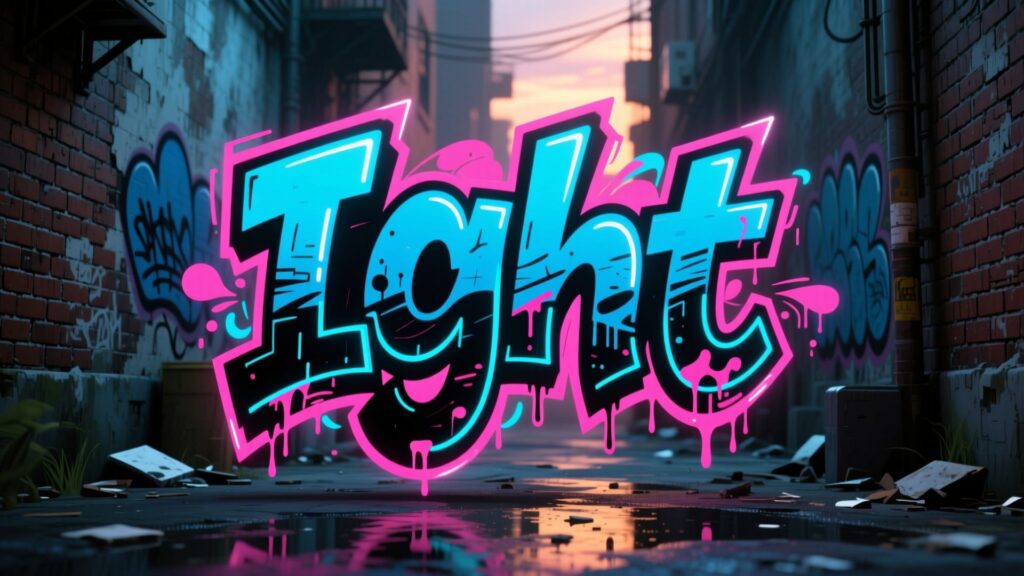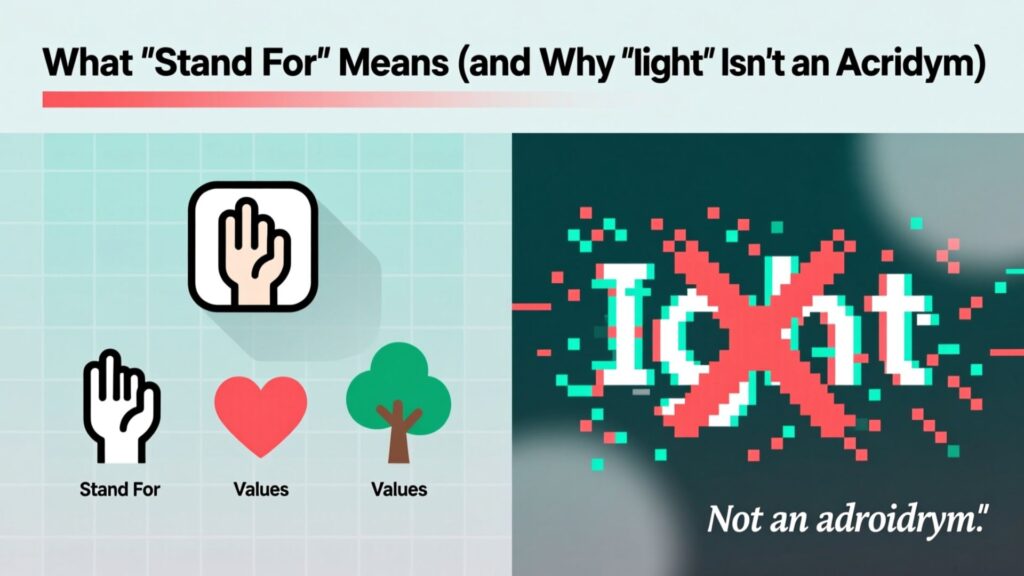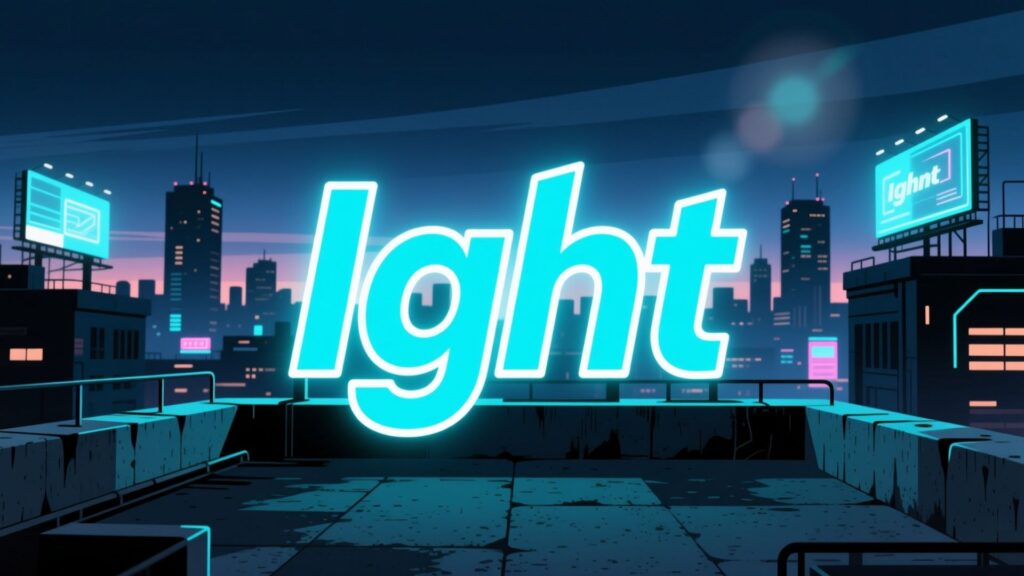Language online moves fast. Slang rises and falls, yet some bits stick around. The term “ight” (and its sibling “aight”) is one of those that’s solidified itself in texting culture. But what does ight mean, exactly? And how do you use it without sounding awkward or tone-deaf?
In this article, you’ll learn what does ight mean in text, what does ight mean in texting, what does ight mean texting, and ight meaning in text. By the end, you’ll know when to drop “ight” and when a clearer alternative is smarter.
Introduction: Why “Ight” Still Works Online

If you’ve ever scrolled social media or exchanged quick messages with friends, “ight” might’ve popped up. It’s short, casual, and low-effort perfect for digital chat. But that brevity can hide a lot: tone, intent, even social context.
As digital communication grows more conversational, slang like “ight” becomes part of the grammar of texting. If you misuse it, you risk sounding curt, cold, or out of touch. Use it right, and it signals camaraderie, efficiency, and cool confidence.
In this post, you’ll get:
- A clear, modern definition of what does ight mean
- Its history and roots
- How tone, punctuation, or emojis shift its meaning
- When what does ight mean in texting and when you should skip it
- Alternatives (formal, casual, enthusiastic)
- Tables, examples, and a tone‐matching guide
- Common misunderstandings and how to avoid them
Let’s dive in.
The Real Meaning of “Ight” in Text
At its core, “ight” is a stylized shorthand of “alright” (or “aight”) used in casual writing and speech, especially online. It often functions as agreement, acknowledgment, or casual affirmation. In many cases, it means “okay,” “got it,” or “sounds good.”
Key senses:
| Use | Meaning in that situation | Example |
|---|---|---|
| Agreement / acceptance | “Yes, I accept or I’m okay with that” | “Meet at 6? Ight.” |
| Acknowledgment | “I understand what you said” | “Don’t forget the keys.” “Ight.” |
| Informal “okay” | More casual version of “alright” | “Ight, I’ll swing by later.” |
| Opening / transition | Beginning a statement like “Alright, so …” | “Ight, here’s what we do.” |
Unlike a rigid word like “yes” or “okay,” “ight” carries flexibility: tone, punctuation, and context all shape its flavor.
The Origin of “Ight”: Linguistic & Cultural Roots
Slang doesn’t just appear from nowhere. What does ight mean in texting has deep roots in African American Vernacular English (AAVE) and the natural elision of “alright” or “aight.”
A linguistic journey:
- The full phrase “all right” often reduces in speech to “aight” (or variants) in colloquial English.
- That “aight” further shortens or drops its initial vowel to become “ight”, via elision (leaving out sounds).
- The spelling “aight” and “ight” have been around since at least the 1990s in speech and online writing.
- Hip-hop, rap, urban youth culture, and social media helped the shorter form spread widely beyond its original community.
In short, ight is not random it’s a version of aight / alright that evolved from spoken usage into digital shorthand.
Context Is Everything: What “Ight” Really Signals
Because “ight” is short and flexible, tone, punctuation, and context change how people interpret it. Here’s how:
| Variation | Implied Tone / Meaning | Example |
|---|---|---|
| “Ight.” | Neutral, minimal, possibly cold or dismissive | “I’ll handle it. – Ight.” |
| “Ight!” | Enthusiastic, positive, excited | “You got tickets? Ight!” |
| “Ight…” | Hesitant, unsure, maybe skeptical | “Ight… if that’s what you want.” |
| “Ight?” | Asking confirmation or checking | “Meet at 8, ight?” |
| “Ight 😂” | Playful, humorous | “Ight 😂 I’ll try that spicy food.” |
Even though it’s only four letters, “ight” can carry emotional weight. Misread tone can lead to misunderstandings.
Case study: Tone shifts
- Person A: “Let’s meet at 7.”
Person B: “Ight.” → neutral acceptance.
Person C: “Ight!” → excited “Yes, I’m in.”
Person D: “Ight…” → hesitation or doubt. - In another thread:
Friend: “I forgot to bring the snacks.”
You: “Ight.” sounds like “I don’t care much.”
Better: “Ight, no worries” adds warmth.
Always think: How many words did you save vs tone lost?
When to Use “Ight” – and When to Avoid It
Knowing what does ight mean texting is only part of the puzzle you should also know when to use ight appropriately and when to skip it.
✅ Use “Ight” When:
- You’re chatting with friends, roommates, or people who understand casual slang.
- The message context is informal (text message, DMs, social chat).
- You need a quick response that signals agreement or acknowledgment without overthinking.
- Overusing full phrases would slow the flow of conversation.
❌ Avoid “Ight” When:
- You’re texting someone in a professional, academic, or formal setting (boss, professor, client).
- The message touches serious emotion or conflict (e.g., apologies, health, condolences).
- You’re unsure the recipient understands slang or is comfortable with it.
- You need clarity or diplomacy use full words like “alright,” “okay,” “I understand.”
Tip: You can blend e.g. “Alright, Ight I’ll go ahead with this plan.”
What “Stand For” Means (and Why “Ight” Isn’t an Acronym)

When folks ask “what does ight stand for?”, they’re often thinking of acronyms. But “ight” doesn’t stand for a phrase it’s just a stylized spelling of “alright.”
On acronym‐listing sites, you’ll find weird expansions like “I Give Hell Tonight” or “I Get Home Tonight” but those are either jokes, coincidences, or back-formed guesses. They’re not part of mainstream texting use.
To clarify:
- Not an acronym → It doesn’t stand for multiple words.
- Variant of “alright” → That’s its root meaning.
- Possible misinterpretations exist, but they’re fringe.
So when someone texts “ight,” they’re not sending you a coded message just the casual “alright / okay” vibe.
When “Ight” Sounds Passive or Disengaged
Because “ight” is minimal, it can feel minimized sometimes too minimized. That’s when it risks sounding passive, uninterested, or even dismissive.
Examples:
Friend: “Hey, you want to chat about this later?”
You: “Ight.”
That might read as “Fine, I’ll do it,” but also “I don’t really care.”
Colleague: “I think we should reschedule.”
You: “Ight.”
Comes off curt, maybe short, possibly rude in that context.
Why this happens:
- Short replies leave little room for warmth.
- Periods or ellipses after “ight” amplify distance.
- Lack of qualifier or emotive language makes it colder.
Tips to maintain warmth:
- Add a friendly word or emoji: “Ight, sounds good 🙂”
- Use it in a phrase: “Ight I’ll get it done.”
- Use alternative language if the topic is important or sensitive.
Using “Ight” with Emojis or Emphasis
Emojis, capitalization, and punctuation act like spices in text. They alter the flavor of “ight” dramatically.
Emoji + “Ight” combos:
- Ight 😂 playful, joking
- Ight 👌 confident agreement
- Ight 🙂 casual positivity
- Ight 😬 hesitant, uncomfortable agreement
- Ight 🔥 hype, excitement
Emphasis via caps or punctuation:
- IGHT! strong positivity or excitement
- Ight… doubt, hesitation
- Ight? seeking confirmation
- Ight (em dash) transition or continuation
Use these modifiers so “ight” doesn’t flatten into a cold four-letter blob. They help communicate tone when facial cues can’t.
Formal Alternatives to “Ight”
In formal writing or professional conversation, you want clarity and respect. Here are better options:
| Casual / Slang | Formal / Professional Alternative | When to Use |
|---|---|---|
| Ight | Sounds good | Emails, memos, messages |
| Ight | Understood | Clear acceptance |
| Ight, sure | That works for me | Scheduling, plans |
| Ight, got it | I understand / I’ll take care of that | Acknowledgment in work context |
| Ight, thanks | Thank you / That sounds fine | When responding to suggestions or offers |
These preserve your meaning but avoid the informality and ambiguity of “ight” in serious or formal settings.
Friendly and Casual Alternatives to “Ight”
When texting friends, you have many better options depending on your tone. Try:
- “Cool.”
- “Sounds good.”
- “Bet.”
- “Sure.”
- “Alright.”
- “Gotcha.”
- “Okay.”
- “Yup.”
Which one to pick? Use the one that matches how excited or casual you feel:
- Neutral: “Cool,” “Alright,” “Okay”
- Confident / casual: “Gotcha,” “Bet”
- Relaxed acceptance: “Sounds good”
Mixing them keeps your texts fresh nobody wants to see “ight” in every reply.
Expressing Enthusiastic Agreement Instead of “Ight”
If you want more energy or positivity than “ight” provides, go with alternatives:
- “Let’s go!”
- “Absolutely!”
- “Definitely!”
- “For sure!”
- “Count me in!”
- “Yes, yes!”
Using these indicates you’re not just okay with a suggestion you’re excited about it. Save “ight” for neutral or low-energy agreements.
Common Misunderstandings About “Ight”
Even though “ight” is simple, people often misinterpret or misuse it. Here are common pitfalls:
🚫 Myth 1: “Ight” always means “yes”
Not always. Context and tone matter. Sometimes it’s just acknowledgment or minimal agreement, not full endorsement.
🚫 Myth 2: You can use “ight” anywhere
Nope. In formal, professional, or serious settings, it’s usually out of place.
🚫 Myth 3: Everyone knows “ight”
Some readers especially older generations or non-native English speakers might not. They may read “ight” as a typo or be confused.
To counter confusion, you can:
- Use the fuller “alright” or “okay” when unsure.
- Avoid “ight” in mixed audiences.
- Use “ight?” only when you’re confident the recipient interprets it correctly.
Comparing “Ight” with Similar Terms
To understand ight meaning in text, let’s compare it to related slang:
| Word / Slang | Tone Level | Formality | Implied Warmth | When to Use |
|---|---|---|---|---|
| Ight | Neutral to casual | Very informal | Medium (context‐dependent) | Friend chats, casual reply |
| Aight | Slightly heavier slang tone | Very informal | Similar to ight | With slang-savvy friends |
| Bet | Casual, confident | Informal | Warm, “I’m in” | Agreeing plans |
| Cool | Calm, neutral | Informal to semi-formal | Medium warmth | Accepting, acknowledging |
| Sure | Polite, simple | Semi-formal | Moderate warmth | Conversations needing clarity |
| Alright | Neutral, standard | More formal | Moderate warmth | General agreement, safe fallback |
By knowing how “ight” stacks up beside these, you can choose the best reply for your listener and context.
Quick Tone-Matching Guide: Which Reply Fits Best?
Below is a tone spectrum to help you choose responses that match the relationship and subject:
Cold / distant → Neutral / casual → Friendly → Enthusiastic
| Tone Level | Example Situation | Reply Options |
|---|---|---|
| Distant / transactional | Someone you barely know asks a favor | “Okay,” “Understood” |
| Neutral / casual | Chat with acquaintances | “Cool,” “Alright,” “Sure” |
| Friendly / peer | Chat with close friends | “Ight,” “Bet,” “Sounds good” |
| Enthusiastic / excited | Planning fun activity | “Let’s go!,” “Absolutely!” |
Checklist for picking tone:
- Who’s texting? Close friend vs coworker matters.
- What’s the subject? Serious topic vs light topic.
- How warm do I want to be? Use emotive words or emojis to shift tone.
- Is clarity needed? If yes, avoid slang.
Best Replies Instead of “Ight”
Here’s a curated list of alternative replies, grouped by tone, with meaning and ideal use:
| Tone | Reply | Meaning / Use |
|---|---|---|
| Neutral / Safe | Okay | Simple acknowledgment |
| Understood | Clear acceptance | |
| Alright | Versatile and safe | |
| Friendly / Casual | Cool | Relaxed acceptance |
| Bet | Confident agreement | |
| Sounds good | Warm, agreeable | |
| Gotcha | Assertion that you understand | |
| Enthusiastic | Absolutely! | Strong positive yes |
| Let’s go! | Excited affirmation | |
| Count me in! | Committed agreement | |
| For sure! | Confident positive agreement |
Use these depending on your mood, relationship, or the energy you want to convey not just what’s easy to type.
Summary: Mastering “Ight” and Its Nuances
Here’s what you should remember:
- “Ight” is a slang contraction of “alright” used in informal text / chat.
- It functions as agreement, acknowledgment, or casual acceptance.
- Tone, punctuation, and emojis dramatically shift how people read “ight.”
- Use “ight” with friends in casual text. Avoid it in formal, serious, or unfamiliar settings.
- Alternatives like “cool,” “sure,” or “sounds good” offer more clarity or warmth.
- Misunderstandings happen when you assume tone or slang familiarity.
If you keep tone and audience in mind, “ight” can be a handy tool in your texting toolbox.
Bugti is the founder of Quoethint.com, a hub for English language tips, writing advice, and grammar guidance. With years of experience in English studies and a passion for clear communication, Bugti created this platform to make grammar and writing easy to understand for everyone.
